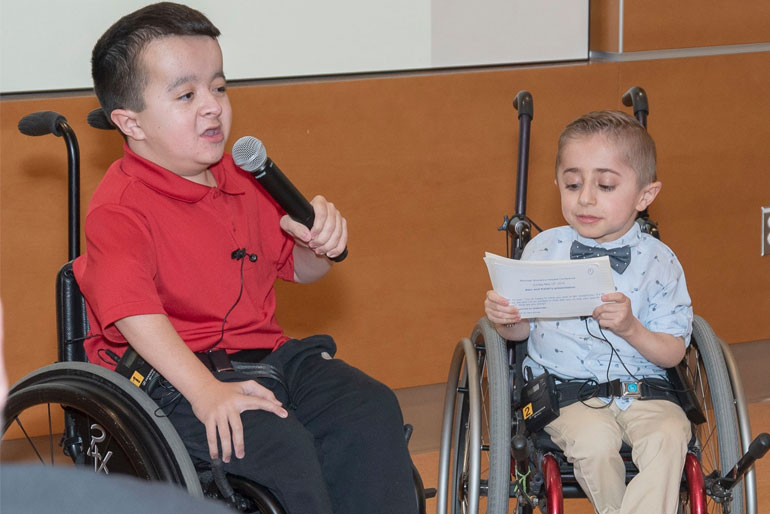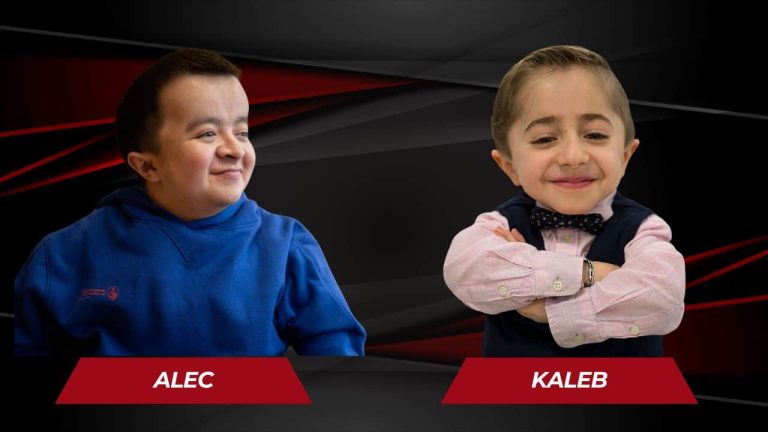Yes, Alec and Kaleb do get paid for their appearances in commercials. As recognizable faces from Shriners Hospitals for Children ads, they serve as spokespersons and public figures for a major national campaign.
While the organization they represent is nonprofit and their message focuses on helping children in need, Alec and Kaleb are still compensated for their time, talent, and repeated appearances.
Their compensation may include standard appearance fees and could also involve residual payments if the commercials air frequently on national TV. This is common practice in the advertising industry—even when campaigns are for charitable causes.
Additionally, since both are minors, any earnings they receive are typically handled under child labor and performer laws, with portions of their income safeguarded in trust accounts.
So while they advocate for a worthy cause and are beloved for their genuine personalities, Alec and Kaleb are indeed paid for their professional work in these commercials.
Who Are Alec and Kaleb?
Alec Cabacungan and Kaleb-Wolf De Melo Torres are two of the most recognizable faces from Shriners Hospitals for Children commercials.
Both were born with osteogenesis imperfecta, commonly known as brittle bone disease, a condition that causes fragile bones and frequent fractures.
Despite the challenges of their diagnosis, Alec and Kaleb have become inspirational spokespeople for the hospital, sharing their stories on national television to raise awareness and support for children with complex medical needs.
Alec, originally from Oak Park, Illinois, has been receiving treatment from Shriners since infancy and has undergone dozens of surgeries.
Known for his confident and upbeat personality, he aspires to be a sports broadcaster and has already gained experience as an interviewer and commentator. Kaleb, born in Canada, has also faced more than 200 bone fractures and numerous surgeries since birth.
His infectious energy and charm have made him a fan favorite among viewers. Both boys use their voices and visibility to highlight the lifesaving care provided by Shriners Hospitals, becoming symbols of strength and resilience. Through their commercials, they’ve touched the hearts of millions and inspired people to support the cause they represent.
Yes, They Get Paid – Here’s How

Alec and Kaleb do receive payment for appearing in the Shriners Hospitals for Children commercials. Although these ads are part of a charitable campaign, both boys are considered performers and public representatives for the organization.
Like any spokesperson or child actor in a professional production, their time, talent, and on-screen presence are compensated according to industry standards.
Their payment likely includes an upfront appearance fee for filming the commercials, and depending on the agreement, they may also earn residuals—additional payments for each time the ad is aired.
Since their commercials run frequently on national television and online platforms, these residuals can accumulate over time. Additionally, because both Alec and Kaleb are minors, their earnings are likely managed under labor laws that protect child performers. This typically includes placing a portion of their income into a trust account for future access.
In short, while their work helps promote a nonprofit cause, Alec and Kaleb are fairly compensated for their roles, just like any professional involved in a major advertising campaign.
What Determines Their Commercial Earnings?
Alec and Kaleb’s commercial earnings are influenced by several key factors common in the advertising and entertainment industry.
One of the biggest elements is the scope of the campaign—national commercials, like those for Shriners Hospitals for Children, tend to offer higher compensation than local or regional ads due to wider reach and longer run times.
The frequency and duration of the commercial’s airtime also play a role; if the ad runs repeatedly over several months or years, it may generate residual payments (royalties), adding to their income.
Another important factor is whether the work is done under a union contract, such as through SAG-AFTRA (Screen Actors Guild). Union agreements typically guarantee minimum payments, overtime, and residuals, as well as protections like trust accounts for child performers.
The visibility and popularity of Alec and Kaleb as recurring spokespeople may also enhance their value, potentially leading to higher appearance fees or bonuses, especially if their roles extend into public speaking, fundraising events, or brand partnerships beyond commercials.
Finally, the terms of their individual contracts—including length, exclusivity, and media rights—help determine how much they earn overall.
While they appear in support of a nonprofit organization, the professional nature of the campaign ensures their contributions are appropriately recognized and fairly compensated.
Upfront Fees vs. Residual Income
When Alec and Kaleb appear in commercials for Shriners Hospitals for Children, their compensation may involve two common types of payment in the advertising world: upfront fees and residual income.
Upfront fees are a one-time payment made for their participation in filming the commercial. This covers their time on set, performance, and any promotional materials created during that session.
These payments are standard practice and vary depending on the length and nature of the commercial shoot. Since Alec and Kaleb are central figures in a recurring national campaign, their session fees are likely higher than average, reflecting the importance of their roles.
On the other hand, residual income refers to additional payments earned each time the commercial is broadcast. For national campaigns that run for months or even years, residuals can accumulate significantly over time.
If their commercial appears repeatedly on TV, YouTube, or other digital platforms, residuals provide a consistent stream of income beyond the initial shoot. Whether Alec and Kaleb receive residuals depends on the structure of their contracts and whether the campaign follows union guidelines (such as those set by SAG-AFTRA), which require such payments.
In summary, while the upfront fee is a one-time compensation for their work, residual income can continue to benefit them as long as the commercials remain active. This model ensures long-term recognition for their ongoing contribution to the campaign.
Are They in a Long-Term Brand Deal?
While Alec and Kaleb haven’t publicly disclosed the specifics of their contracts, it’s widely understood that their continued presence in Shriners Hospitals for Children commercials suggests a long-term brand partnership.
Both have been featured in multiple national campaigns over several years, often appearing together in updated or seasonally themed versions of the same ongoing message. This kind of consistent visibility is typical of a long-term engagement, where the individuals essentially become the recognizable faces of a brand or cause.
Such arrangements, especially for nonprofit organizations like Shriners, often go beyond a single appearance or commercial shoot.
Alec and Kaleb not only participate in TV spots but also represent the hospital at public events, fundraising drives, social media campaigns, and online content. Their roles extend into ambassadorship, helping to communicate the hospital’s mission and build public trust through relatable, personal stories.
In advertising terms, this level of involvement often qualifies as a brand spokesperson agreement, which may or may not be formalized in a contract but typically includes recurring work, appearance expectations, and continued compensation over time.
While it’s likely that Alec and Kaleb are not under strict commercial contracts like celebrity endorsers for corporate brands, their ongoing collaboration with Shriners reflects a long-term relationship built on trust, advocacy, and mutual purpose.
Do Alec and Kaleb Get Paid Like Celebrities?

While Alec and Kaleb are widely recognized for their roles in Shriners Hospitals for Children commercials, their compensation likely does not match that of mainstream celebrities who endorse major corporate brands.
Celebrity endorsers—such as actors, athletes, or influencers—can earn hundreds of thousands to millions of dollars for national ad campaigns. Their fees often include exclusivity clauses, royalties, global rights, and performance bonuses.
In contrast, Alec and Kaleb are featured in nonprofit awareness campaigns where the purpose is mission-driven rather than commercial.
Although they likely receive fair and industry-standard compensation for their time—possibly including appearance fees and residuals—their roles are more aligned with spokesperson or ambassador work rather than high-end celebrity advertising contracts.
However, it’s important to note that Alec and Kaleb have built a unique form of recognition. Their widespread visibility, emotional connection with audiences, and continued presence over the years have made them household names, especially within the context of charitable messaging. This kind of impact is rare and valuable, even if the financial rewards don’t reach celebrity levels.
In summary, Alec and Kaleb are fairly compensated, especially by nonprofit standards, but they do not earn celebrity-level paychecks. Their influence comes from the heart, not Hollywood—yet they’ve made just as lasting an impression.
Their Impact Beyond the Screen
Alec and Kaleb’s influence goes far beyond their appearances in commercials. As patient ambassadors for Shriners Hospitals for Children, they have become powerful symbols of resilience, hope, and advocacy for children with complex medical needs.
Their heartfelt messages and genuine personalities have not only helped raise awareness for the hospital’s mission but have also inspired millions of viewers across the country.
Beyond the screen, both Alec and Kaleb participate in fundraising events, hospital campaigns, and community outreach programs. They often appear at live events, share their stories in interviews, and connect with supporters on social media.
Alec, in particular, has expressed interest in a career in sports broadcasting and has taken steps toward that dream—further extending his presence into mainstream media.
Their visibility has also helped change perceptions about children with disabilities. By confidently representing themselves on national platforms, they’ve become role models for kids facing similar health challenges and shown that limitations do not define one’s potential.
In short, Alec and Kaleb’s impact is not limited to television. Through their advocacy, public appearances, and personal stories, they’ve become influential figures who uplift others and promote the importance of accessible, specialized pediatric care.
Conclusion
Alec and Kaleb have become beloved and recognizable figures through their appearances in Shriners Hospitals for Children commercials.
While their roles center around promoting a charitable cause, they are indeed compensated for their time and effort, just like other professional spokespersons. Their earnings likely include upfront appearance fees and possibly residual payments, especially given the national reach and repeated airings of their commercials.
Although they may not earn at the level of Hollywood celebrities, Alec and Kaleb have built something arguably more meaningful: a legacy rooted in authenticity, advocacy, and resilience. Their influence extends far beyond advertising—they’ve become powerful voices for children with disabilities, inspiring millions with their personal stories and positivity.
In essence, Alec and Kaleb are not only paid ambassadors—they’re real-life role models whose impact goes well beyond the screen.

